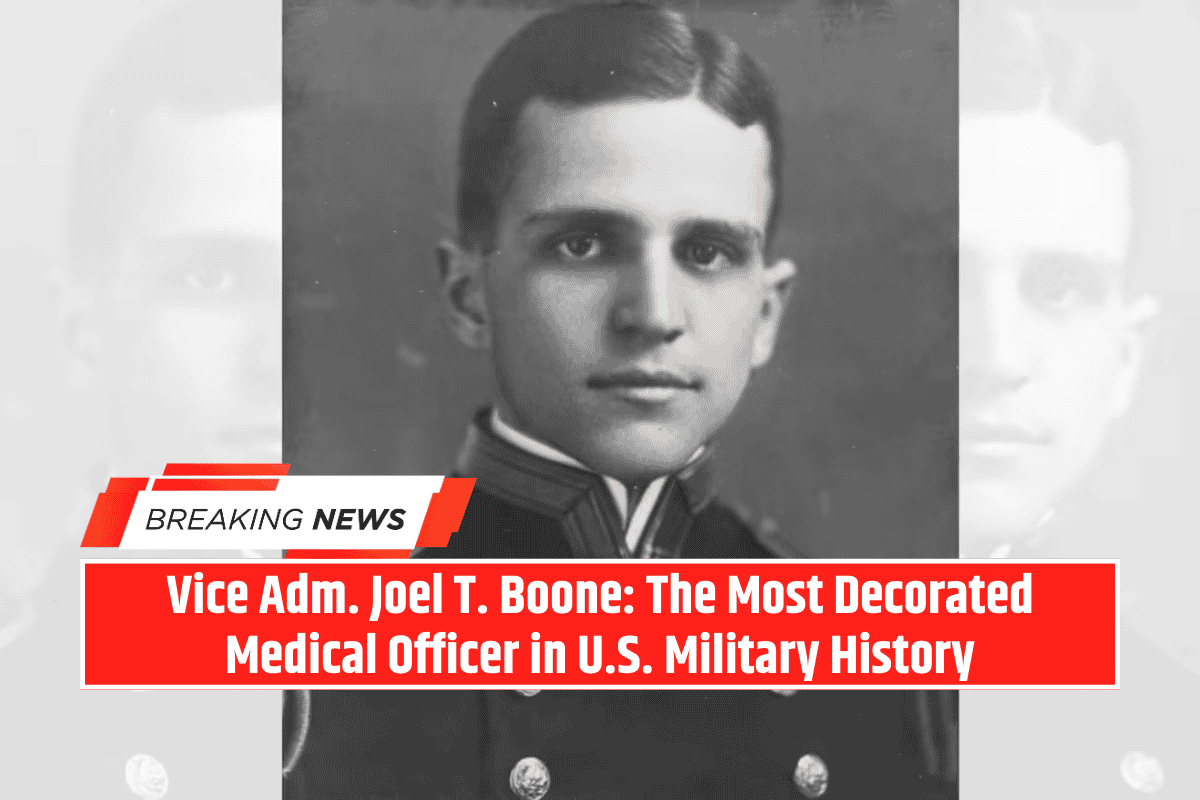Joel Thompson Boone was born on August 29, 1889, in St. Clair, Pennsylvania. Though a distant cousin of the frontier explorer Daniel Boone, his own legacy would be forged not on the frontier, but on battlefields across the globe.
After graduating from Mercersburg Academy in 1913, he attended Hahnemann Medical College in Philadelphia. Boone was commissioned into the U.S. Naval Reserve in 1914 and received a Regular Navy commission in 1915 after completing the U.S. Naval Medical School in Washington, D.C.
Early Service and World War I Assignment
Boone’s first overseas assignment came in 1915 as medical officer for the 13th Marine Company during the Cacos Rebellion in Haiti.
By April 1917, when the United States entered World War I, Boone was serving aboard the battleship USS Wyoming (BB-32). Soon after, he was assigned as a Navy surgeon with the 6th Marine Regiment.
Heroism at Belleau Wood
In June 1918, Boone faced relentless combat during the Battle of Belleau Wood, a brutal 25-day confrontation that became legendary in Marine Corps history.
On June 9 and 10, his regimental aid station was destroyed twice by enemy shelling. Despite this, he continued to treat the wounded under fire.
On June 25, Boone followed a battalion assaulting machine-gun positions, setting up forward dressing stations while shells rained down. His actions earned him the Distinguished Service Cross for extraordinary bravery.
Acts of Valor at Vierzy
Boone’s most famous actions occurred on July 19, 1918, during the Second Battle of the Marne near Vierzy, France. Amid heavy shelling and gas attacks, he repeatedly left cover to rescue Marines and provide lifesaving aid.
After exhausting his medical supplies, he commandeered a motorcycle and sidecar, driving through bombardments to fetch more supplies — twice in one day. Witnesses later testified that his courage saved countless lives.
For these extraordinary deeds, Boone was awarded the Medal of Honor.
Military Career and Honors
Boone’s heroism made him a legend among Marines. He was promoted to lieutenant commander in September 1918 and continued his service through the Armistice of November 11, 1918. His career spanned four major conflicts:
- World War I
- World War II
- Korean War
- Early 20th-century interventions, including Haiti
His decorations included:
- Medal of Honor
- Distinguished Service Cross
- Six Silver Stars
- Bronze Star with “V”
- Two Purple Hearts
- French Légion d’Honneur (Officer)
- Croix de Guerre with two bronze stars
These awards cemented his place as the most decorated medical officer in U.S. Armed Services history.
Later Service and White House Physician
During World War II, Boone represented American medical forces at the surrender of Japan aboard the USS Missouri on September 2, 1945.
He also served as White House physician to Presidents Warren G. Harding, Calvin Coolidge, Herbert Hoover, and briefly Franklin D. Roosevelt, making him a trusted figure at the highest levels of government.
Death and Legacy
Vice Adm. Joel T. Boone died on April 2, 1974, in Washington, D.C., and was buried in Arlington National Cemetery, later joined by his wife, Helen Elizabeth.
Boone’s extraordinary valor and service across four wars earned him a lasting place in U.S. military history — not only as a physician but as a warrior whose dedication to saving lives under fire became legendary.








